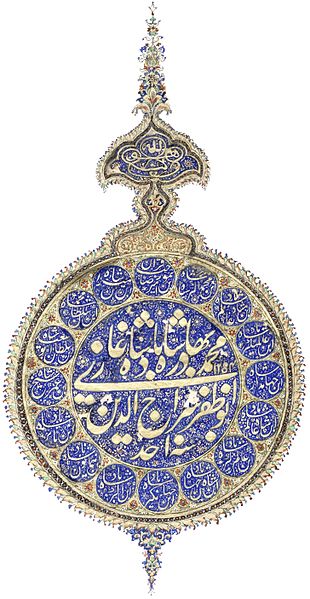The Siege of Delhi was one of the decisive conflicts of the Indian Rebellion of 1857. The rebellion against the authority of the East India Company was widespread through much of Northern India, but essentially it was sparked by the mass uprising by the sepoys of the Bengal Army, which the company had itself raised in its Bengal Presidency. Seeking a symbol around which to rally, the first sepoys to rebel sought to reinstate the power of the Mughal Empire, which had ruled much of the Indian subcontinent in the previous centuries. Lacking overall direction, many who subsequently rebelled also flocked to Delhi.
Battle damage to the Kashmiri Gate in Delhi, 1857.
The Flagstaff Tower, Delhi, where the British survivors of the rebellion gathered on 11 May 1857
View of Delhi, from the Palace Gate, 1858
Hindu Rao's house in Delhi, now a hospital, was extensively damaged in the fighting.
Bahadur Shah II (born Mirza Abu Zafar Siraj-ud-din Muhammad, usually referred to by his poetic title Bahadur Shah Zafar, was the twentieth and last Mughal emperor and an Urdu poet. He was the second son and the successor to his father, Akbar II, who died in 1837. He was a titular Emperor, as the Mughal Empire existed in name only and his authority was limited only to the walled city of Old Delhi. Following his involvement in the Indian Rebellion of 1857, the British deposed him and exiled him to Rangoon in British-controlled Burma in 1858, after convicting him on several charges. The title of Empress of India was subsequently assumed by Queen Victoria.
Portrait of Bahadur Shah II, c. 1850
Image: Ghulam Ali Khan 018b
Sons of Bahadur Shah Zafar. On the left is Jawan Bakht, and on the right is Mirza Shah Abbas.
A panorama showing the imperial procession to celebrate the feast of the Eid al-Fitr, with the emperor on the elephant to the left and his sons to the right (24 October 1843)








